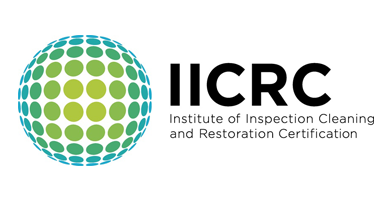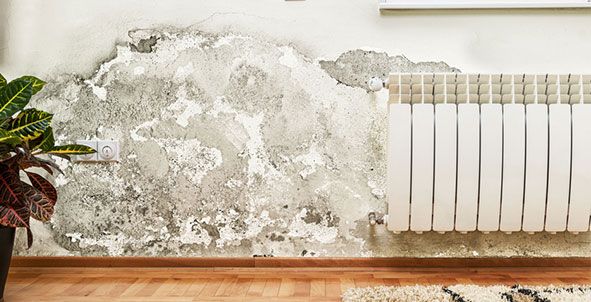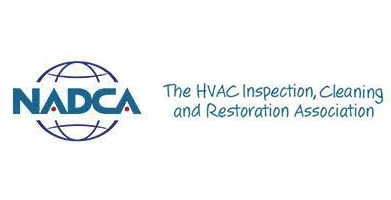Serving New Jersey and Parts of NY and PA
Commercial, Residential, Public Works, Schools, Universities, Insurance Claims, and More
About
Consolidated Environmental Inc
About Consolidated Environmental Inc
Consolidated Environmental Inc has been a leader in the environmental remediation industry since 1991. We serve customers in New Jersey and parts of New York and Pennsylvania from our headquarters in Rahway, NJ. Some of our most popular services for homeowners and business owners include:
We have over 30 years of experience you can count on. Call (973) 244-0424 to learn more or for a free estimate.
The Consolidated Environmental Inc History
Consolidated Environmental Inc was founded in 1991 at our previous headquarters in Fairfield, NJ, we moved to our new headquarters in Rahway NJ we continues to provide top-notch remediation, restoration, and retrofit services. When Davidge Warfield (OPMP, CMH, CMR) joined the organization, our Energy Services Division was formed based on his pioneering efforts in the areas of Aeroseal and mastic and sealing of exhaust systems. He pioneered one of the First NYSERDA exhaust retrofit services with Steven Winter Associates and was awarded the pilot research ventilation project with NY DHCR for 10 buildings through the Weatherization Project to ascertain its real-world feasibility.
To date, more than 200 multi-family buildings have been completed in the NYC area using this process. Consolidated Environmental Inc continues to be the leader in the sealing of multi-family buildings as opposed to pressurized fogging or other methods. Our revolutionary sealing method offers significant advantages.
Advanced Certifications & Training Earned by Our Staff Members
The Consolidated Environmental Inc team is dedicated to ensuring the highest standards of indoor air quality. Our IICRC-certified technicians receive advanced training in cleaning and restoration methods approved by the American Conference of Governmental Industrial Hygienists and the NYC Department of Health. Other qualifications we have include:
- Experience in sterile environments that include hospitals, operating rooms, and research labs
- Experience in high-traffic areas, including schools, offices, jails, post offices, and hotels
- NADCA, IICRC, NJSDA, NY State Mold Assessor Remediator Trained & Licensed, EPA RRP
- OSHA's 10HR, 30HR, 40HR Hazwoper, SST, Confined Spaces, Scissor/Boom Lifts, Aeroseal applications
- Training in the use of HEPA-negative air machines, dislodgers, respirators, HAZMAT suits, and more
Feel free to contact us to learn more about the qualifications and certifications we have that make us perfect for your restoration and remediation job.
Code of Ethics for Our Technicians
Our employees agree to the following professional Code of Ethics:
- We promise to provide competent and honest service to our customers.
- We'll employ source removal techniques to complete our task.
- With our advertising, we'll be truthful and upfront.
- We will provide accurate inspections and evaluations, using this information to determine required services.
- We will only offer our customers the services they need and want; we won't try to sell them unnecessary goods or services.
- We will utilize specialists with advanced skills, tools, or trades not possessed by us when circumstances warrant.
- We will stay abreast of new developments in technology, tools, and other industry upgrades that impact our daily efforts.
- We will require employees to practice furnace/air duct cleaning within NADCA guidelines and the Code of Ethics.
- According to the association's most recently stated criteria, we will provide our services.
Professional Memberships Held by Consolidated Environmental Inc
Professional memberships held by the Consolidated Environmental Inc team include:
- Association of Specialists in Cleaning and Restoration (ASCR)
- National Air Duct Cleaners Association (NADCA)
- Indoor Air Quality Association (IAQA)
To learn more about our restoration, remediation, or retrofitting services for homeowners and business owners, call (973) 244-0424
today!
Example of a Job Completed by Consolidated Environmental Inc
Customer
- The Science of
Why the Customer Reached Out to Us
- Mold remediation, cleaning and disinfecting HVAC systems, and fire and water damage restoration.
Solutions We Provided
Many individuals think nothing of leaving their homes for a few days or even a few weeks. They forward their mail and ask a trusted neighbor to keep an eye on the place – to cut the grass, shovel the snow, and watch for anything unusual.
Unfortunately, if someone isn't going inside to check for leaks or other problems, they can go undetected for some time, and the results can be disastrous. Such was the case for Louis Lederhaas.
Mr. Lederhaas owns two homes – one in Washington State and one in New Jersey. He alternates between the two and has his office based in one of them. Last summer, he received an $800 water bill for the home in New Jersey, where no one had lived for several months. According to the bill, they had used 301,000 gallons of water. When Lederhaas flew back to New Jersey to check it out, he found that the rubber hose to the washing machine had burst, and the water had been running for several weeks. (The city only read the meters every three months, so the leak could have occurred anytime during the previous period.) Fortunately, the water was able to drain out through a basement shower and the back door, but the damage to the area was still extensive, with major mold and water damage from the flooding.
First, Lederhaas called a client who identified the problem and turned the water off. Then, he contacted his insurance agent who made several suggestions regarding the next course of action. Shortly thereafter, the insurance company hired Environmental Health Investigations, Inc., an indoor environmental firm, to conduct the initial testing and write the scope for the job.
Bill Kerbel, president of Environmental Health Investigations, is a certified industrial hygienist with more than 20 years experience in the field. A certified industrial hygienist (CIH) receives certification from the American Board of Industrial Hygienists, has a minimum of five years experience, an advanced degree in an associated science, and has passed a rigorous two-day test similar to the boards passed by physicians or the exams for the legal or accounting professions.
In cases such as this, the role of a CIH involves the recognition and evaluation of hazards to determine their potential health effects, as well as providing engineering controls to abate or manage the hazard. Sampling during an initial visit frequently involves a combination of bulk samples (placing affected materials in a normal zip-lock bag), wipe samples (swabbing a surface with sterile swabs) and air samples (utilizing some type of a vacuum pump to collect air), as well as spore traps and dust samples. Results of the tests are normally available in two to three weeks. The sampling method varies according to the specific types of problems and the materials affected.
During the initial visit, the focus also involves a visual, as well as an invasive (drilling holes and inserting moisture meters) inspection. The determination of whether or not there is a problem also takes into consideration the fact that the levels of spores inside should be lower than the levels outside. Both indoor and outdoor samples should be taken on any mold remediation project. Once the hazards and the existence of mold have been identified, the CIH writes the scope (roadmap) for the project.
The scope specifies the type of containment to be utilized, whether affected materials must be disposed of or cleaned (i.e., HEPA vacuumed, disinfected), personal protective equipment for workers, decontamination requirements, use of specialized equipment or materials (i.e., negative air machine) and how specific surfaces should be cleaned.
In the Lederhaas case, extreme amounts of mold – in excess of 5 million colony forming units per gram – (100,000 per gram is considered excessive) were found, including: Aspergillus versicolor, Aspergillus sydowii, Penicillium, Verticillium leconii, Stachybotrys chartum, Doratomyces sp., Gliomastix murorum, and Myrothecium roridum.
There has been a lot of information (and some misinformation) in the mainstream press concerning the health effects of mold exposure. Not all molds produce toxic health effects, but they can pose serious problems for individuals whose immune systems are compromised (i.e., individuals suffering from AIDS or undergoing chemotherapy). Side effects in a normally healthy individual can include head congestion, dizziness, grogginess, sore throat and headaches. The mycotoxins produced by molds can be harmful to humans and animals if inhaled, ingested or touched. Symptoms can include respiratory problems, coughing, sneezing, watery eyes and even more serious health problems.
“You need a competent person to make the decisions regarding mold,” explained Kerbel. “Is the mold to the extent that it’s problematic? What will we need to do to abate it? What is the scope of the work to be done?” All of these issues need to be decided by a competent individual who is not involved in the project. “The CIH is a third-party, independent quality-control person,” said Kerbel.
“We need to be able to define the work and to show that it has been successfully completed,” he added. “There needs to be a beginning, during and end to the project. We can’t have the contractor do all that himself because it would be a conflict of interest.”
For Lederhaas, the next step was to locate an environmental remediation firm to handle the project. Another client referred Lederhaas to Ira Finger, president of CConsolidated Environmental Inc for the restoration and clean up of the basement.
Consolidated Environmental Inc has three specialties – mold remediation, cleaning and disinfecting HVAC systems, and fire and water damage restoration. Finger first saw the house on September 11, 2001, and began work on the project in early November. Testing, remediation and restoration of the 800-square-foot project spanned a period of several weeks. (It takes approximately two to three weeks to receive results for each round of testing. Samples are taken before, during and after a project.) The mold contamination in the basement was extremely visible, but there were no obvious signs of moisture before the remediation began.
During the initial phase of the project, several steps were taken to protect the company’s employees and the rest of the house. First, the basement was placed under negative air pressure. This was accomplished by placing several HEPA-filtered negative air machines inside the house and sealing critical openings with 6-mil poly. A pressure differential data logger was also used to ensure the proper negative air pressure was maintained.
A contained entrance booth was then set up outside the back door. Workers entered only through this contained entrance to the basement. The workers were also required to wear disposable Tyvek suits and respirators with HEPA filters. The purpose of the containment was to prevent the mold contamination from spreading any further.
Finger and his crew removed all of the sheetrock walls and ceilings as specified in the scope prepared by Kerbel. This is typically done even if there isn’t any visible mold on the outside of a section because hidden mold growth can frequently be found in the wall cavities or backsides of drywall. The wood that was badly damaged was also removed, and the rest was cleaned. After disposing of the contents, the crew was instructed to pull up the linoleum floor. They cleaned the area until it looked visibly clean and wiped down all the surfaces with two different types of disinfectants.
“We found a ‘hidden wall’ with mold growth in one area,” said Finger. “The front of the wall showed visible signs of mold growth, so the wall was removed, revealing yet a second sheetrock wall that was heavily contaminated and subsequently removed. Behind that was the exterior wall constructed of cinderblock. Apparently, a previous owner had painted the wall with black waterproofing paint, which held the water in.”
Finger then took moisture readings on the exterior walls and the concrete floor – both of which had been concealed until the walls and flooring had been removed. An unacceptably high level of moisture was found, so refrigerant dehumidifiers were used over a two- to three-week period to further dry out the space. After the moisture levels were lowered, the remaining wood framing was removed, and the entire basement was re-cleaned and disinfected.
To prevent cross-contamination in other parts of the house, Consolidated Environmental Inc set up a containment barrier. “We used a laser particle counter to measure the dust levels upstairs,” explained Finger. “We cleaned upstairs twice even though it passed [clearance testing] the first time. We cleaned it again to prevent recontamination.”
Once the remediation was complete, Bill Kerbel took additional samples. The clearance testing showed a lower reading for mold spores inside the house than outside during the winter months (when the levels would normally be low).
Each indoor air quality remediation project demands thoroughness and flexibility, whether it is a mold remediation, a sewer backup or a flood. A literal “work in progress,” the multi-step process requires patience, ingenuity and accuracy from the professionals involved.
“Our company philosophy is that we do it right or we don’t do it at all,” concluded Finger. “With the health of building and home occupants on the line, we can’t afford to do anything less.”
Helpful Resources
Memberships
- Association of Specialists in Cleaning and Restoration (ASCR)
- Mechanical Systems Hygiene Institute (MSHI)
- National Air Duct Cleaners Association (NADCA)
- Refrigeration Service Engineers Society (RSES)
General Indoor Air Quality Information
- Environmental Protection Agency
- EPA Publication on Mold Remediation in Schools & Commercial Buildings
- American Society of Heating, Refrigerating and Air Conditioning Engineers, Inc. (ASHRAE)
Asthma/Allergies/Multiple Chemical Sensitivity
- American Lung Association
- Allergy and Asthma Network - Mothers of Asthmatics
- Health House
Awards and Affiliations

Institute of Inspection, Cleaning and Restoration Certification (IICRC)
Category: Memberships
-
Learn More
The Institute of Inspection, Cleaning and Restoration Certification (IICRC) is a certification and standard-setting non-profit organization for the inspection, cleaning, and restoration industries. The IICRC standards serve to develop common, industry-accepted language and terminology that will lead to a higher level of competency for workers in their respective fields. IICRC-certified technicians set themselves apart through training, experience, and comprehensive examinations.
The examinations consist of the successful completion of one or more of the 28 certification courses available. The exams are based on standards set by the IICRC, which is an American National Standards Institute (ANSI) member and an accredited standards developer.
When you hear the term “industry standard,” it means a standard of function or operation that is carried out in that respective industry. The IICRC standards are upheld to the highest globally recognized standard in which all IICRC technicians and firms govern themselves by the quality and assurance they provide to the consumer.
National Air Duct Cleaners Association (NADCA)
Category: Memberships
-
Learn More
NADCA’s mission has expanded to include qualified companies engaged in the inspection, cleaning, and restoration of HVAC systems. NADCA supports members' success with standards, education, certification, marketing, and advocacy to promote ethics and the highest quality of services. The goal of the association is for its members to be the number one resource for consumers and other entities seeking air duct cleaning and HVAC inspection, cleaning, and restoration.
About
Year Established
Products
Services
- Mold Remediation
- Water and Fire Restoration
- Exhaust Retrofitting and Duct Sealing
- HVAC and Duct Cleaning
- Contents Restoration
- Rodent Cleanup Work
- Storm and Disaster Restoration
- Kitchen Hood Cleaning
Specialties
- Air Duct Cleaning
- Commercial and Residential Duct System Cleaning
- Construction Services
- Corporate, Commercial, and Residential Services
- Disaster Restoration
- Disaster Restoration Services
- Duct System Cleaning
- Exhaust Retrofitting
- Fire Damage
- Fire Damage Restoration
- Flood Damage
- Flood Damage Restoration
- HVAC Cleaning
- HVAC Inspection, Cleaning, and Restoration
- HVAC System Inspection, Cleaning, and Restoration
- HVAC Technology and Remediation Procedures
- Industrial, Commercial, and Residential Environment Services
- Mechanical Hygiene and Air Duct Cleaning
- Mechanical Hygiene Services
- Professional Rodent Clean-Up
- Remodeling Services
- Roof Replacement
- Roof Replacement Services
- Storm Damage
- Storm Damage Restoration
- Technologically Advanced Cleaning
- Water and Fire Damage Restoration Services
- Water Damage
- Water Damage Restoration
- Consulting
- Content Restoration Services
- IICRC Certification
- Mold Remediation
- Exhaust Retrofitting and Duct Sealing
- HVAC and Duct Cleaning
- Contents Restoration
- Storm and Disaster Restoration
Business Hours
- Mon - Fri
- -
- Sat - Sun
- Closed
Holiday Hours
Associations
Brands
Pickup and Delivery
Payment Options
- American Express
- Cash
- Check
- Discover
- MasterCard
- Visa
Languages
- English
- Spanish
Good to Know
serving Area
New Jersey
Parts of NY
Parts of PA
and surrounding areas
Office Hours
- Mon - Fri
- -
- Sat - Sun
- Closed
Emergency Services Available 24/7



Share On: